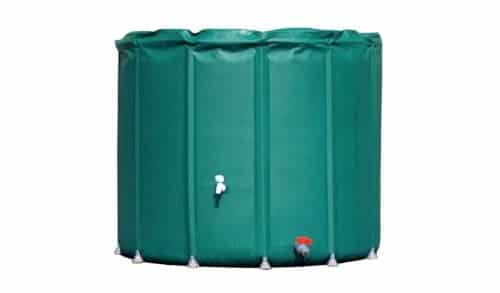An Introduction To Water Tanks
There are many different types of water tanks, each with its own advantages and disadvantages. The term tank is often used in the construction industry to describe a large container that is intended for storing water. These containers have been in use since the early days of civilisation.
Modern water tanks are used for a variety of applications, including household water storage, industrial use, and fire suppression. They are available in various shapes and sizes and can be constructed from plastic, steel, fiberglass, stone, or concrete. Their main use is to store water that is used for human consumption and other purposes. They are also useful for fire suppression and chemical processing. Some tanks can also be used to collect rainwater.
Plastic Or Concrete Water Tanks
There are pros and cons to both types of water tanks, and a qualified technician can help you choose the right one for your needs. Generally, most people lean towards the plastic option, which is more cost-effective and easier to install and repair. However, concrete tanks have their advantages as well and are a better choice in some situations.
Plastic tanks do not have the same level of strength as concrete tanks. If they are overloaded, they may dent or warp. Also, they may not withstand extreme weather conditions. Therefore, you should consider the location of your house when deciding between the two. Concrete tanks can withstand harsh weather, but may not stand up to extreme pressure.
Concrete tanks are more expensive than plastic ones, but are also more durable. Concrete water tanks are not prone to float and are less likely to rust and corrode. Also, they can be easily repaired and are great for places where you want to install a tank underground. In addition, you can find concrete tanks in precast form, which make them easy to install and maintain.
Concrete tanks are the traditional water tanks, which have the most longevity. However, they can be vulnerable to different kinds of damage. Plastic tanks are prone to being twisted by tree roots, and they are less resilient than concrete tanks. Furthermore, they cannot be buried more than three feet deep (source). Therefore, they are not the best choice for areas where earthquakes are frequent.
A typical plastic water tank is rectangular in shape and can be installed in several locations. The plastic is resistant to chemical corrosion and is made of low-density polyethylene (LDPE). Many of these tanks have translucent walls that can be used to monitor the contents. They can also be installed in multiple locations for greater storage capacity.
An Introduction to Sizes of Water Tanks
If you’re considering purchasing a water tank for your home, it helps to know that there are several different sizes. When selecting the correct size water tank, it is important to consider your specific water and home conditions. You need to know how much water is needed for bathing, flushing toilets, and running appliances. To determine the right tank size, some manufacturers suggest figuring out the number of fixtures in your home.
Large water tanks are necessary for different industrial and agricultural uses. As a result, they need to be durable and reliable.
Choosing the Best Water Tanks For Home
When choosing the best water tanks for your home, there are several things to consider. For example, you want to ensure that the tank is able to hold enough water for your family. There are also some important safety precautions you should be aware of. For instance, if you plan to leave the tank outside, make sure you place it under a shaded area to avoid exposure to sunlight. If you plan to store the tank indoors, make sure you take measurements of your doorways and hallways, and even the turn at the bottom of stairs. Lastly, you want to make sure the tank is easy to fill and drain.
You also want to consider how many people you are planning to house. You may want to consider a larger tank if you live in a big housing complex. Water tanks also need to be cleaned twice a year to ensure their health and safety. By using liquid detergents and chlorine, you can ensure that the water in your home is clean and safe to use.
Stainless steel is the best choice for water tanks because it is recyclable and doesn’t corrode like other materials. A stainless steel tank is also durable and easy to repair. This makes it a great choice for people who are conscious of the environment.
An Introduction to Collapsible Water Tanks
Collapsible water tanks are designed for transport and positioning in confined areas, making them a convenient choice for emergency water storage. A collapsible water tank consists of a rigid outer frame and a flexible liner. The frame can be made of aluminum, steel, or polypropylene. Liners can be made from a variety of reliable materials, including PVC, polypropylene, or red vinyl. Regardless of the material, it is essential to inspect the ports and discharge valves for proper operation.
These tanks have a variety of uses. For example, they can be used by fire fighters, who use these tanks to store water during emergencies. They are also useful for storing potable water during power outages. They are also ideal for emergency situations, such as wildfires and industrial fires.
Because collapsible water tanks are lightweight and easy to carry, they are the perfect solution for emergency water storage. They also come in custom sizes and are easy to store. In addition to being lightweight and convenient, collapsible tanks are ideal for residential and industrial applications.

Buy a 1000L Collapsible water tank >
Legal Requirements For Water Tanks in Australia
In Australia, there are several legal requirements for water tanks. In addition to the water quality requirements, there are other safety requirements that must be met in order for water tanks to be legally used. These standards are governed by AS/NZS 4766 (source) and AS/NZS ISO 9001 (source). Both of these standards are very specific and focus on quality management systems.
To comply with the water quality requirements, a water tank must meet the minimum size requirements. It is important to consider the area where the tank will be placed. It is possible to use rainwater from a nearby creek or dam, which is considered an effective water source.
If the tank is used for drinking water, it must have a warning label to identify its purpose. This will alert the water carter that it is intended to be used for drinking water.
If you’re considering installing a water tank on your property, it is important to learn as much as you can about the legal requirements for tanks. You can always contact your local council for information on the requirements. They can provide a useful guide on how to install a water tank and meet the requirements.







